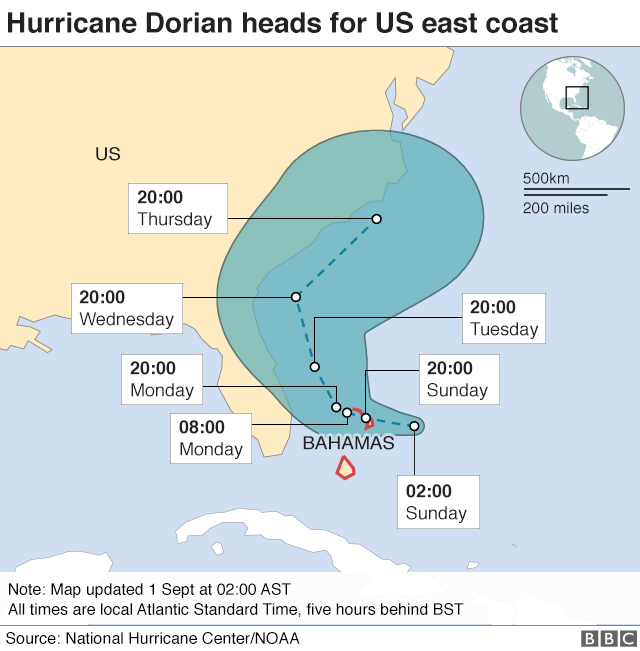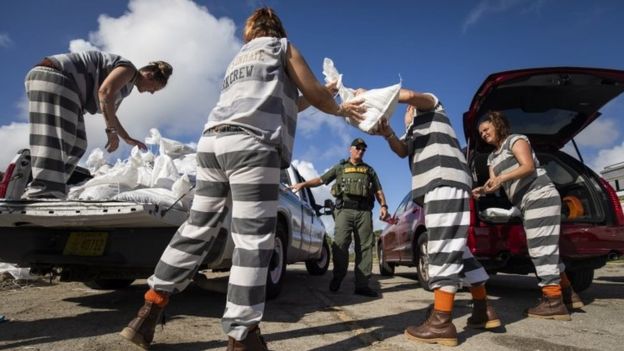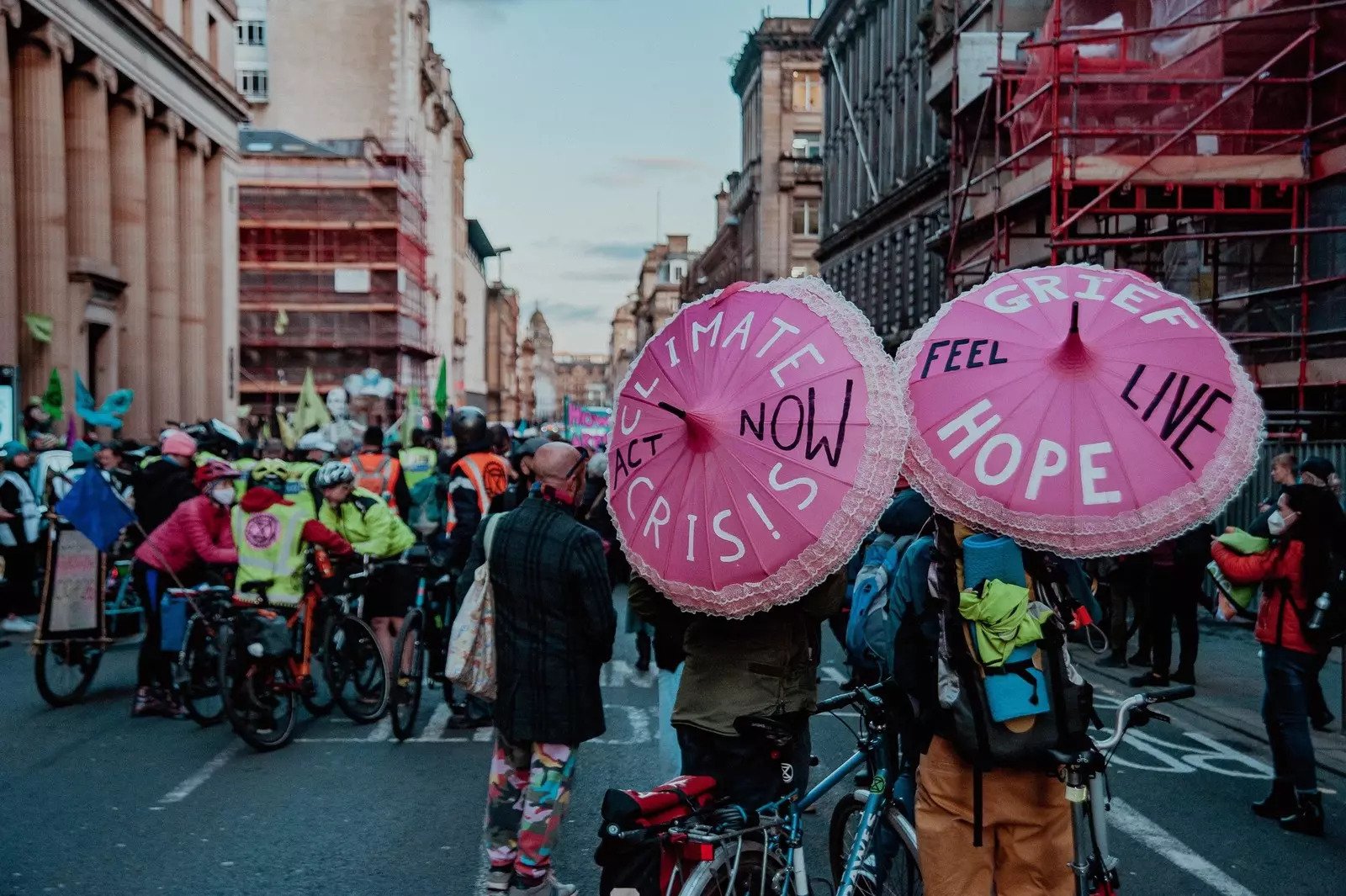Hurricane Dorian: Bahamas battered by ‘monster’ storm
The most powerful storm to hit the Caribbean islands of the Bahamas since records began has torn roofs from buildings and caused severe flooding.
Hurricane Dorian, a category five storm, has sustained winds of up to 180mph (285km/h).
A “life-threatening” storm surge of 23ft (7m) is also predicted in places, officials warn.
The hurricane is moving slowly westwards and may hit areas of the eastern US seaboard.
The US states of Florida, Georgia, North and South Carolina have all declared states of emergency.
Areas of the Abaco islands were reported to be underwater after the storm hit the Bahamas’ Elbow Cay soon after midday (16:00 GMT) on Sunday.
The storm also battered Grand Bahama island with high winds and torrential rainfall.
Bahamas residents posted footage showing floodwaters engulfing some homes after high winds had torn their roofs off. Videos also show capsized boats floating in floodwaters filled with debris.
First video coming in from Bahamas after Dorian passed through and it’s complete devastation https://t.co/8c91KTEBkU pic.twitter.com/LdvVQFstWY
— WPLG Local 10 News (@WPLGLocal10) September 1, 2019
Dorian is expected to continue to move over Grand Bahama Island into Monday.
It is then due to move closer to Florida’s east coast late on Monday and through to Tuesday night local time.
On Sunday, US National Hurricane Center (NHC) director Ken Graham said the Bahamas would be under major hurricane conditions for 10 hours or more.
Authorities closed some airports in the outlying islands, but the main international airport remained open on Sunday.


Hurricanes, which vary in strength from category one to five on the Saffir-Simpson scale, tend to get stronger as they move over warm waters like those off the coast of Florida.
Dorian has also grown larger in size, with hurricane-force winds currently extending 45 miles (75km) from the storm’s centre.
How did the Bahamas prepare?
Prime Minister Hubert Minnis announced an evacuation order for parts of Grand Bahama and the Abaco Islands, both in the north of the archipelago. All tourists were asked to leave the islands.
Mr Minnis was visibly upset as he addressed a news conference on Sunday.
“This is probably the most sad and worst day of my life,” he said, calling Dorian a “monster storm”.
“We’re facing a hurricane… one that we’ve never seen in the history of the Bahamas,” the prime minister added.

How destructive are category five hurricanes?
With sustained wind speeds of at least 157mph they are relatively rare, although four other storms reached this level in the last three years:
- Michael made landfall in Florida last year, causing 59 deaths and about $25bn (£20bn) in damage. It was the strongest storm to make landfall in the US in 26 years and only the fourth hurricane of this category to have hit the country
- Maria, in 2017, devastated the island of Dominica, where it was responsible for 31 deaths, before causing widespread destruction in Puerto Rico as a category four hurricane. A study said nearly 3,000 people had died there as a result
- Irma, also in 2017, made seven landfalls, four of which were category five, across the northern Caribbean Islands, before making landfall in the Florida Keys as a category four storm. It was one of the strongest and costliest hurricanes on record and caused 47 deaths in total
- Matthew, in 2016, was a category five storm that later made landfalls in Haiti, Cuba and Grand Bahama Island as a major hurricane. It was the deadliest hurricane in more than a decade, with 585 deaths, more than 500 of them in Haiti alone
Source: US National Hurricane Center
What about the US?
President Donald Trump himself has cancelled a planned trip to Poland and met emergency management officials.
He told reporters on Sunday that the storm “looks monstrous” and the US east coast “will be ultimately impacted and some of it very, very severely”.
President Trump has also issued a federal state of emergency for Florida, and the state’s governor, Ron DeSantis, has activated 2,000 National Guard troops, with another 2,000 on standby.
Evacuation orders have been given in coastal areas of Florida and South Carolina.
As Dorian crawled towards the US, shoppers were seen queuing around blocks to buy supplies such as medication and fuel.

Popular attractions, including Disney World in Orlando, have said they are “closely monitoring” the storm. The coastal city of Miami has also ordered the removal of electric rental scooters from the streets to avoid them becoming projectiles.






